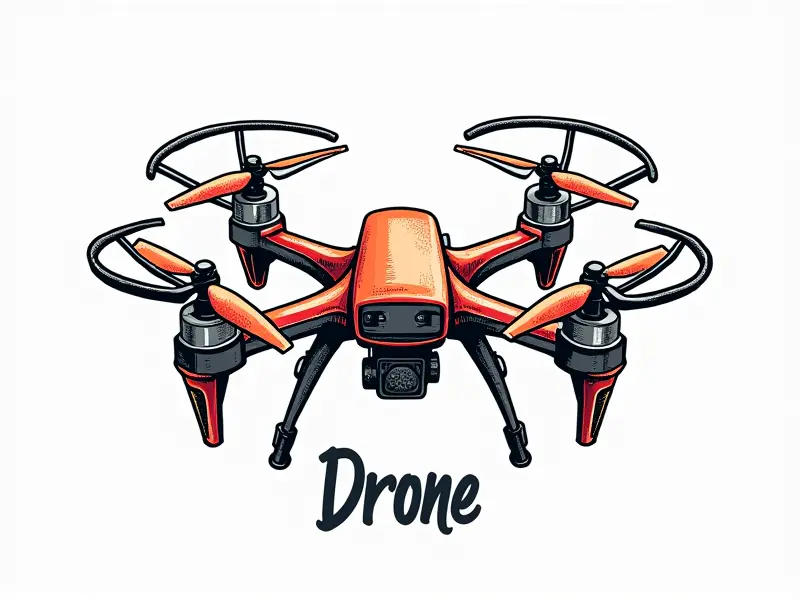How to control a homemade drone?

Mastering DIY Drone Controls
Flying a homemade drone can be an exhilarating experience, but it requires mastering the controls and understanding the nuances of flight. Whether you're building your own quadcopter or assembling a custom multirotor, this guide will help you navigate the skies with confidence.
Beginner's Guide to Flying Homemade Drones
Assembling a DIY drone can be both fun and challenging. Once it’s ready for flight, the next step is learning how to control it effectively. Here are some basic tips to get started:
- Understand Your RC Transmitter: Familiarize yourself with your remote controller's layout and functions.
- Practice Hovering: Start by practicing hovering in a small, enclosed space. This helps you understand how to maintain altitude and stability.
- Learn Basic Maneuvers: Once comfortable with hovering, move on to basic maneuvers like forward/backward flight, left/right movement, and turning.
Tips for Controlling Your Custom Drone
Controlling a custom drone requires more than just pushing buttons. Here are some advanced tips to enhance your flying experience:
- Calibrate Sensors: Ensure all sensors like accelerometers and gyroscopes are properly calibrated.
- Adjust PID Settings: Fine-tune the Proportional, Integral, Derivative (PID) settings for optimal performance.
- Use FPV Gear: First-person view (FPV) goggles or monitors can greatly improve your control and situational awareness.
Navigate Like a Pro with Homemade Drones
To navigate effectively, you need to understand the principles of drone flight. Here are some key navigation tips:
- Learn Basic Navigation Commands: Master commands like yaw, pitch, and roll.
- Practice in Different Environments: Flying in various terrains helps you adapt to different conditions.
- Use Waypoints: Plan your flight path using waypoints for precision navigation.
Essential Skills for Flying DIY Drones
Flying a DIY drone involves several essential skills. Here’s what you need to know:
- Maintain Flight Stability: Keep your drone stable and level during flight.
- Avoid Obstacles: Stay vigilant for obstacles in the environment, especially when flying indoors.
- Understand Battery Management: Monitor battery levels to avoid unexpected landings due to low power.
The Art of Controlling DIY Quadcopters
Flying a quadcopter is both an art and a science. Here are some advanced techniques for controlling your quadcopter:
- Master Hovering Techniques: Perfect the hover to ensure smooth transitions between maneuvers.
- Practice Acrobatic Flips: Learn how to perform flips and rolls with precision.
- Optimize Flight Patterns: Develop efficient flight patterns for optimal performance in different scenarios.
Quick Start Guide to DIY Drone Flight
If you’re new to flying homemade drones, here’s a quick start guide to get you up and running:
- Assemble Your Drone: Follow the assembly instructions carefully.
- Charge Batteries: Ensure all batteries are fully charged before your first flight.
- Fly in a Controlled Environment: Start with indoor flights to get comfortable with controls.
DIY Drone Flight Controls Explained
Understanding the various controls on your remote is crucial for effective flying. Here’s a breakdown of common controls:
- Throttle: Controls vertical movement (up and down).
- Aileron: Manages roll left and right.
- Elevator: Handles pitch up and down.
- Rudder: Controls yaw for turning left and right.
Flying Techniques for Homemade Drones
Mastery of flying techniques is key to becoming a proficient DIY drone pilot. Here are some advanced techniques:
- Straight Line Flight: Maintain straight lines during flight to improve navigation.
- Circle Flights: Practice circling your drone for better control over turns and rotations.
- Hovering in Windy Conditions: Learn how to maintain stability in windy environments.
DIY Drone Navigation Made Easy
Navigating with a homemade drone can be challenging, but these tips will make it easier:
- Use GPS Coordinates: Plan your flight path using GPS coordinates for precise navigation.
- Leverage Altitude Control: Adjust altitude to avoid obstacles and maintain optimal flight conditions.
- Practice Landings: Perfect your landing techniques to ensure smooth landings every time.
Perfect Your Drone Flying Skills Today
Flying a homemade drone is an exciting endeavor that requires patience, practice, and persistence. By following these tips and mastering the controls, you’ll be flying like a pro in no time. Remember to always prioritize safety and follow local regulations to ensure a positive flying experience.

